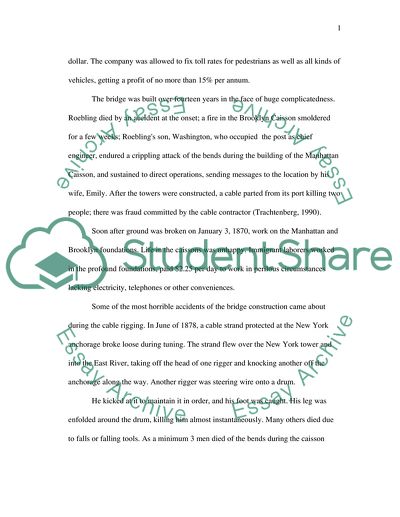Cite this document
(“History of the Brooklyn Bridge Essay Example | Topics and Well Written Essays - 1250 words”, n.d.)
Retrieved from https://studentshare.org/history/1535282-history-of-the-brooklyn-bridge
Retrieved from https://studentshare.org/history/1535282-history-of-the-brooklyn-bridge
(History of the Brooklyn Bridge Essay Example | Topics and Well Written Essays - 1250 Words)
https://studentshare.org/history/1535282-history-of-the-brooklyn-bridge.
https://studentshare.org/history/1535282-history-of-the-brooklyn-bridge.
“History of the Brooklyn Bridge Essay Example | Topics and Well Written Essays - 1250 Words”, n.d. https://studentshare.org/history/1535282-history-of-the-brooklyn-bridge.


